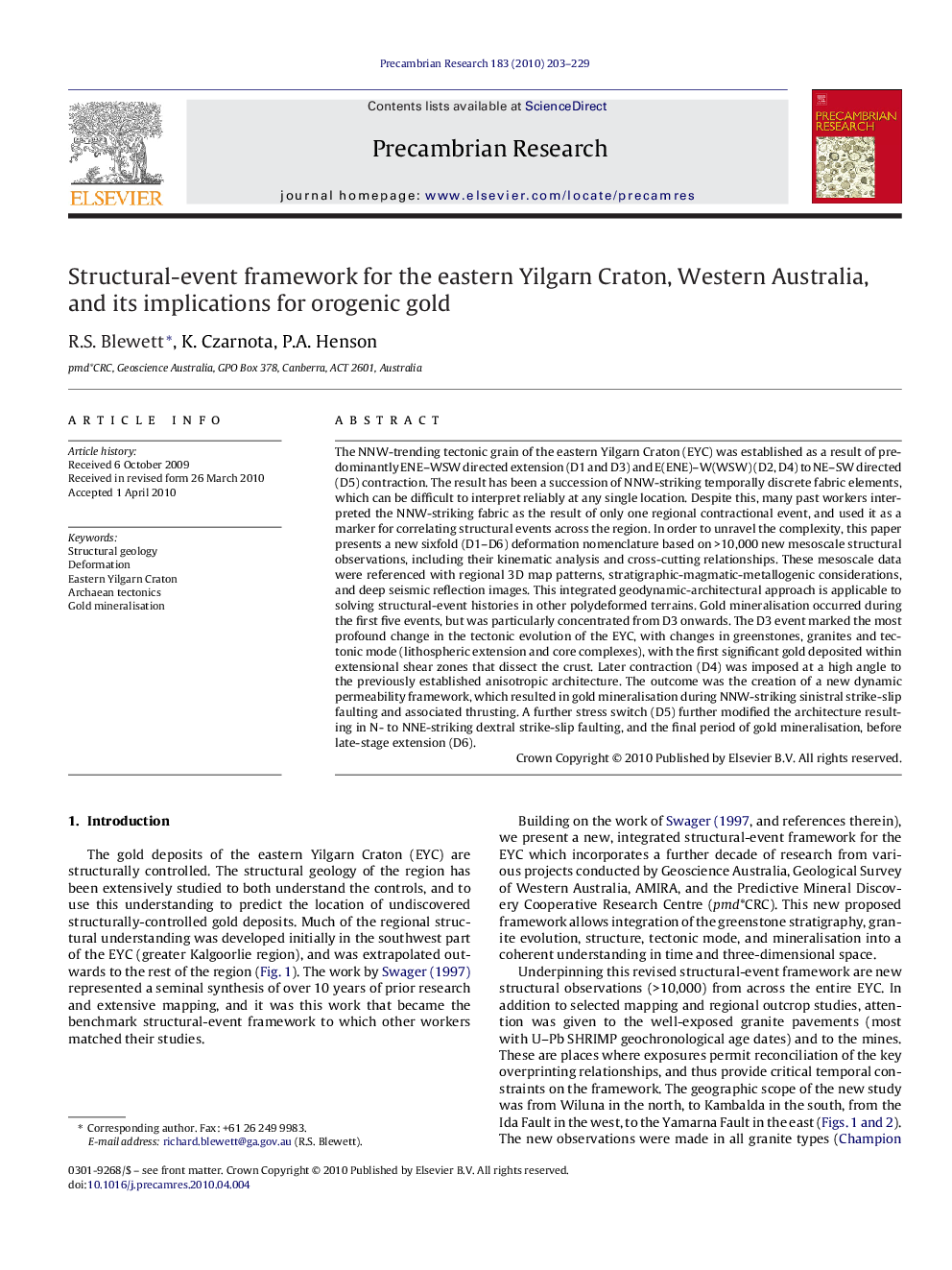| کد مقاله | کد نشریه | سال انتشار | مقاله انگلیسی | نسخه تمام متن |
|---|---|---|---|---|
| 4723776 | 1355546 | 2010 | 27 صفحه PDF | دانلود رایگان |

The NNW-trending tectonic grain of the eastern Yilgarn Craton (EYC) was established as a result of predominantly ENE–WSW directed extension (D1 and D3) and E(ENE)–W(WSW) (D2, D4) to NE–SW directed (D5) contraction. The result has been a succession of NNW-striking temporally discrete fabric elements, which can be difficult to interpret reliably at any single location. Despite this, many past workers interpreted the NNW-striking fabric as the result of only one regional contractional event, and used it as a marker for correlating structural events across the region. In order to unravel the complexity, this paper presents a new sixfold (D1–D6) deformation nomenclature based on >10,000 new mesoscale structural observations, including their kinematic analysis and cross-cutting relationships. These mesoscale data were referenced with regional 3D map patterns, stratigraphic-magmatic-metallogenic considerations, and deep seismic reflection images. This integrated geodynamic-architectural approach is applicable to solving structural-event histories in other polydeformed terrains. Gold mineralisation occurred during the first five events, but was particularly concentrated from D3 onwards. The D3 event marked the most profound change in the tectonic evolution of the EYC, with changes in greenstones, granites and tectonic mode (lithospheric extension and core complexes), with the first significant gold deposited within extensional shear zones that dissect the crust. Later contraction (D4) was imposed at a high angle to the previously established anisotropic architecture. The outcome was the creation of a new dynamic permeability framework, which resulted in gold mineralisation during NNW-striking sinistral strike-slip faulting and associated thrusting. A further stress switch (D5) further modified the architecture resulting in N- to NNE-striking dextral strike-slip faulting, and the final period of gold mineralisation, before late-stage extension (D6).
Journal: Precambrian Research - Volume 183, Issue 2, 15 November 2010, Pages 203–229